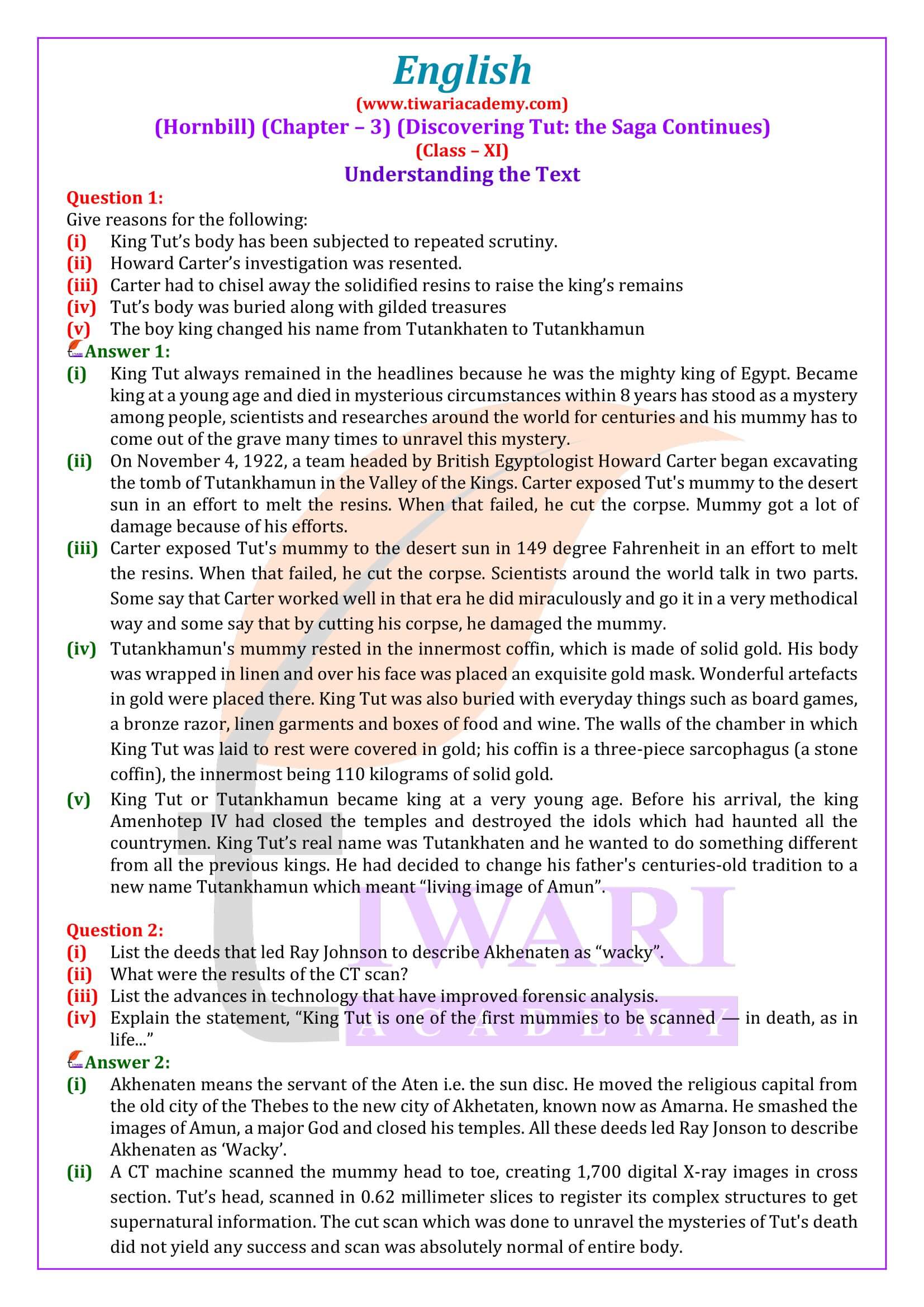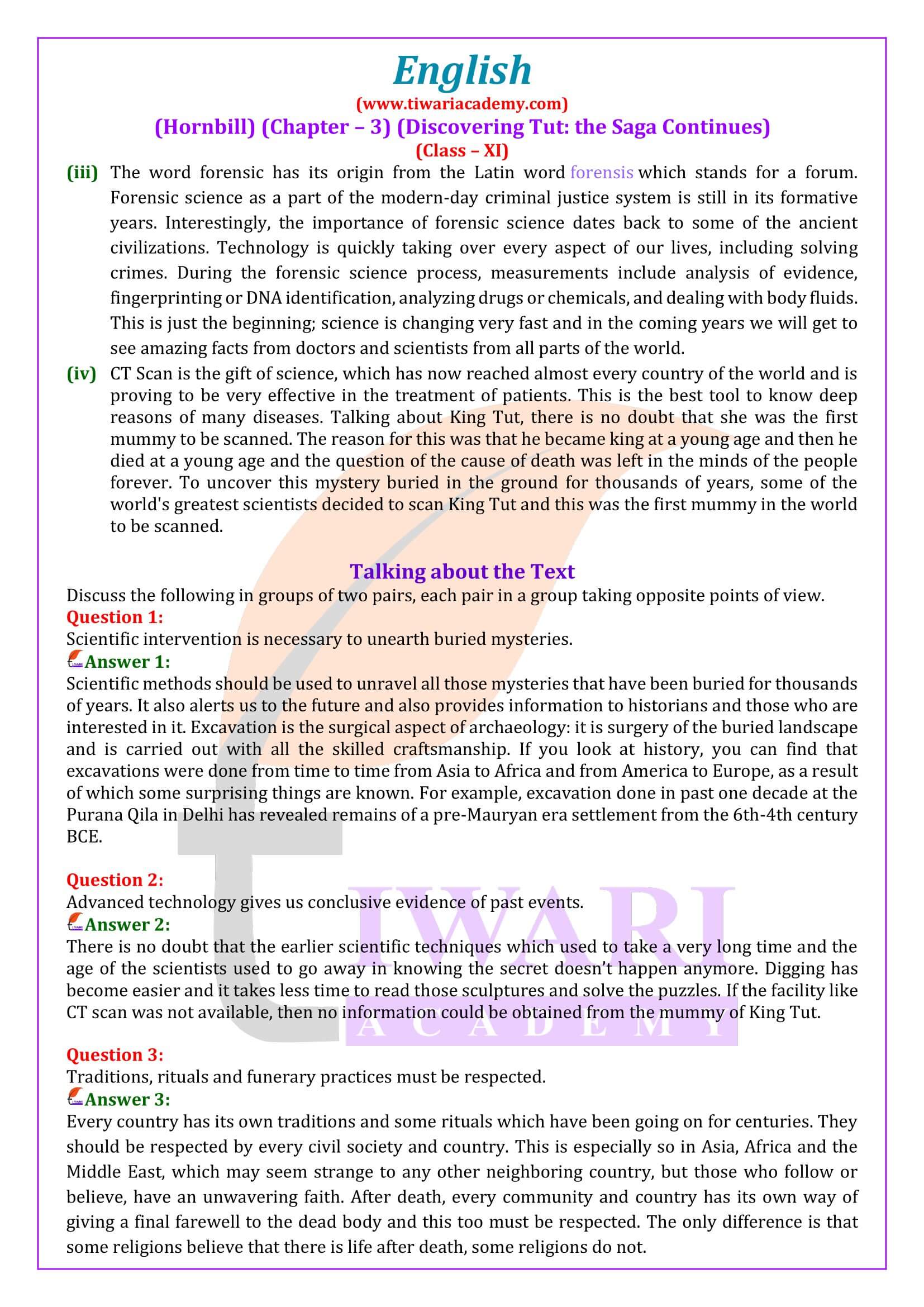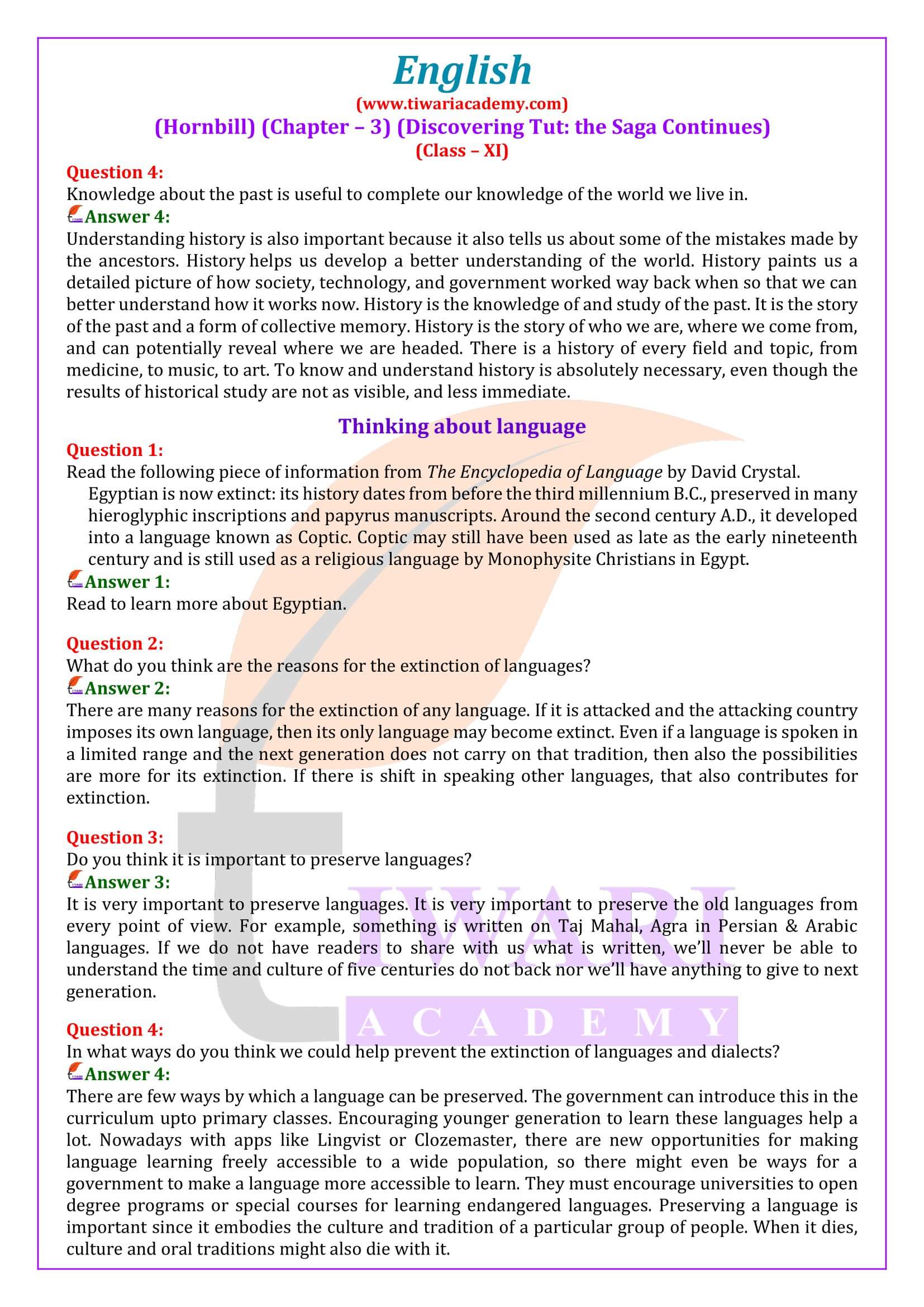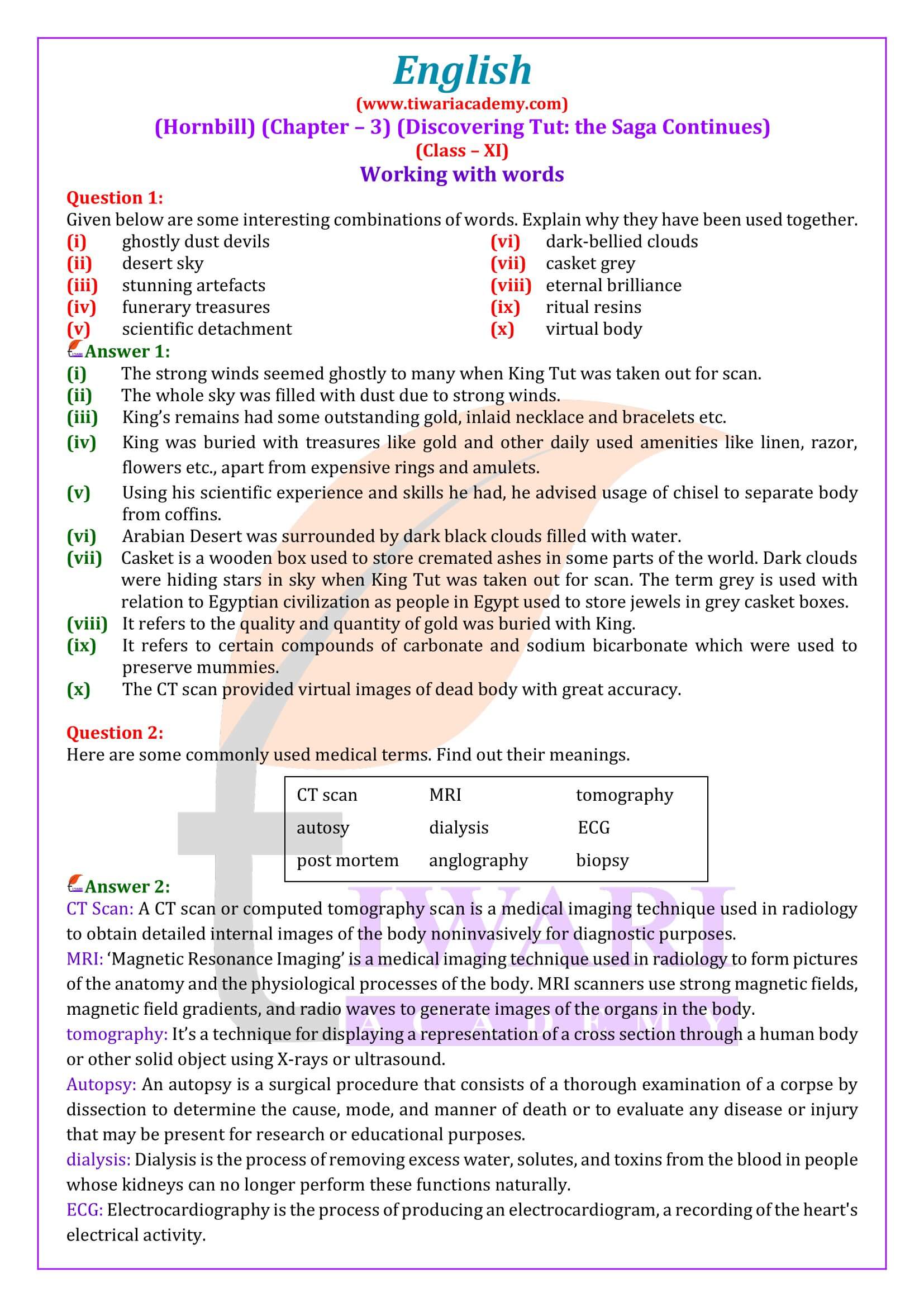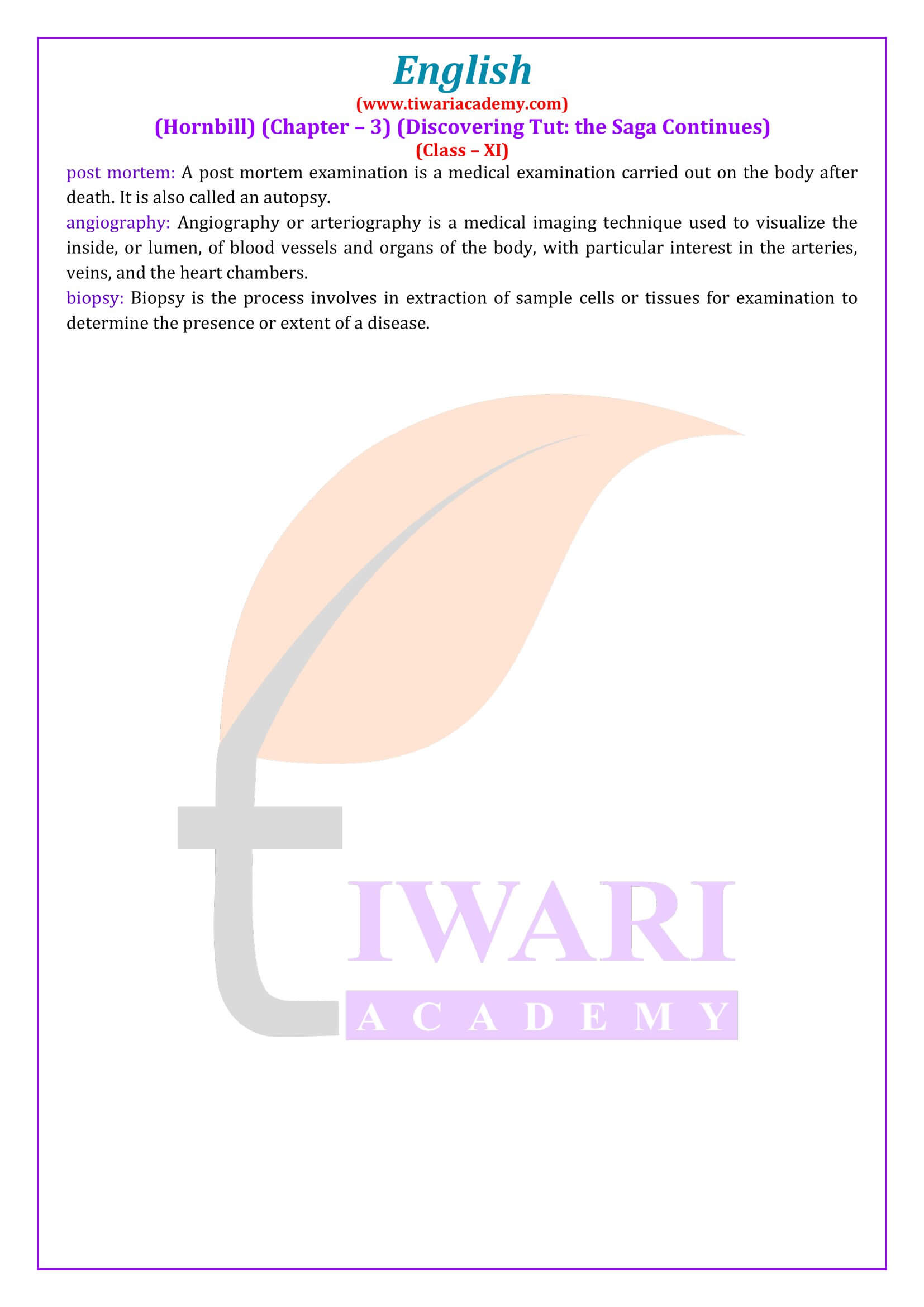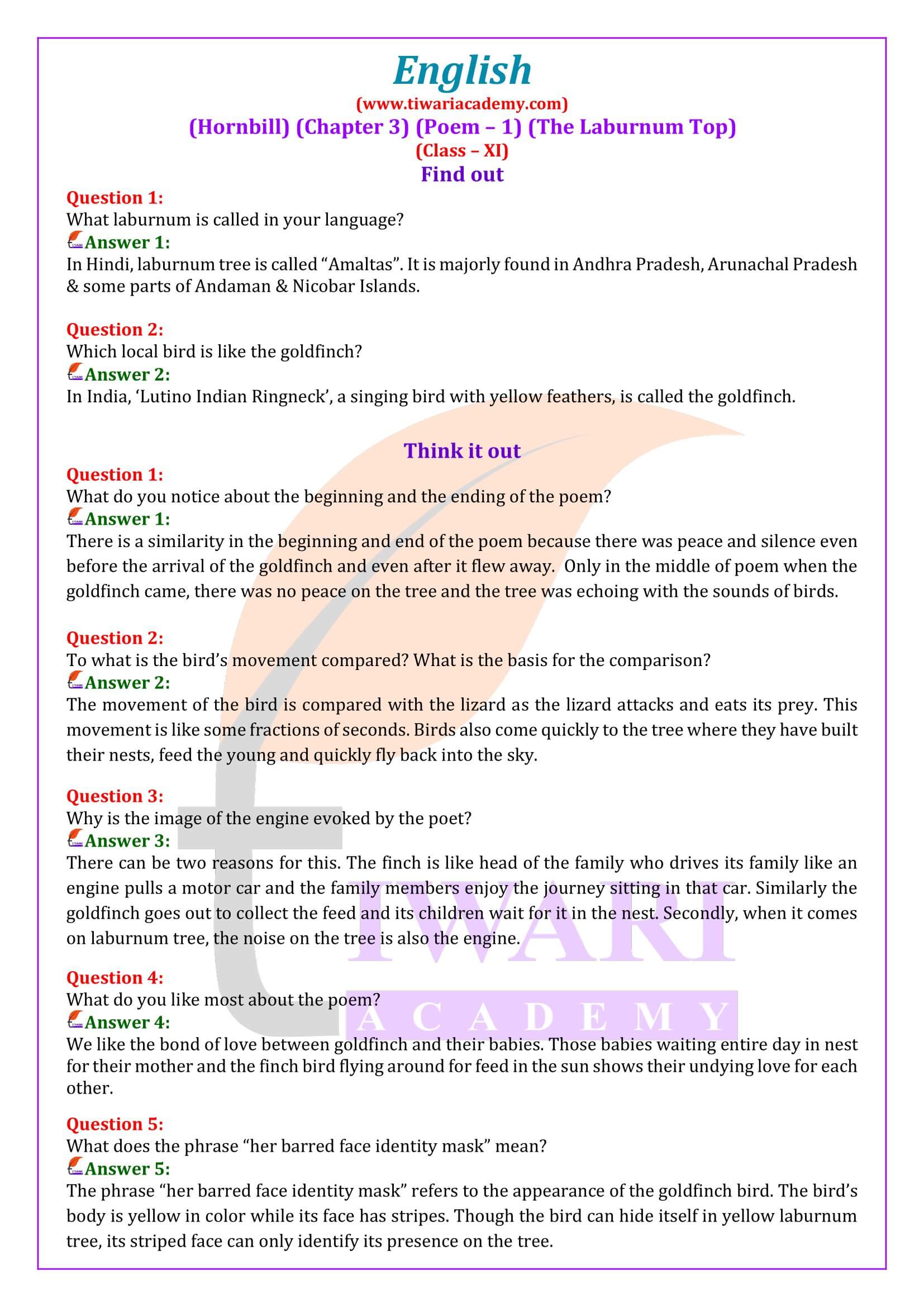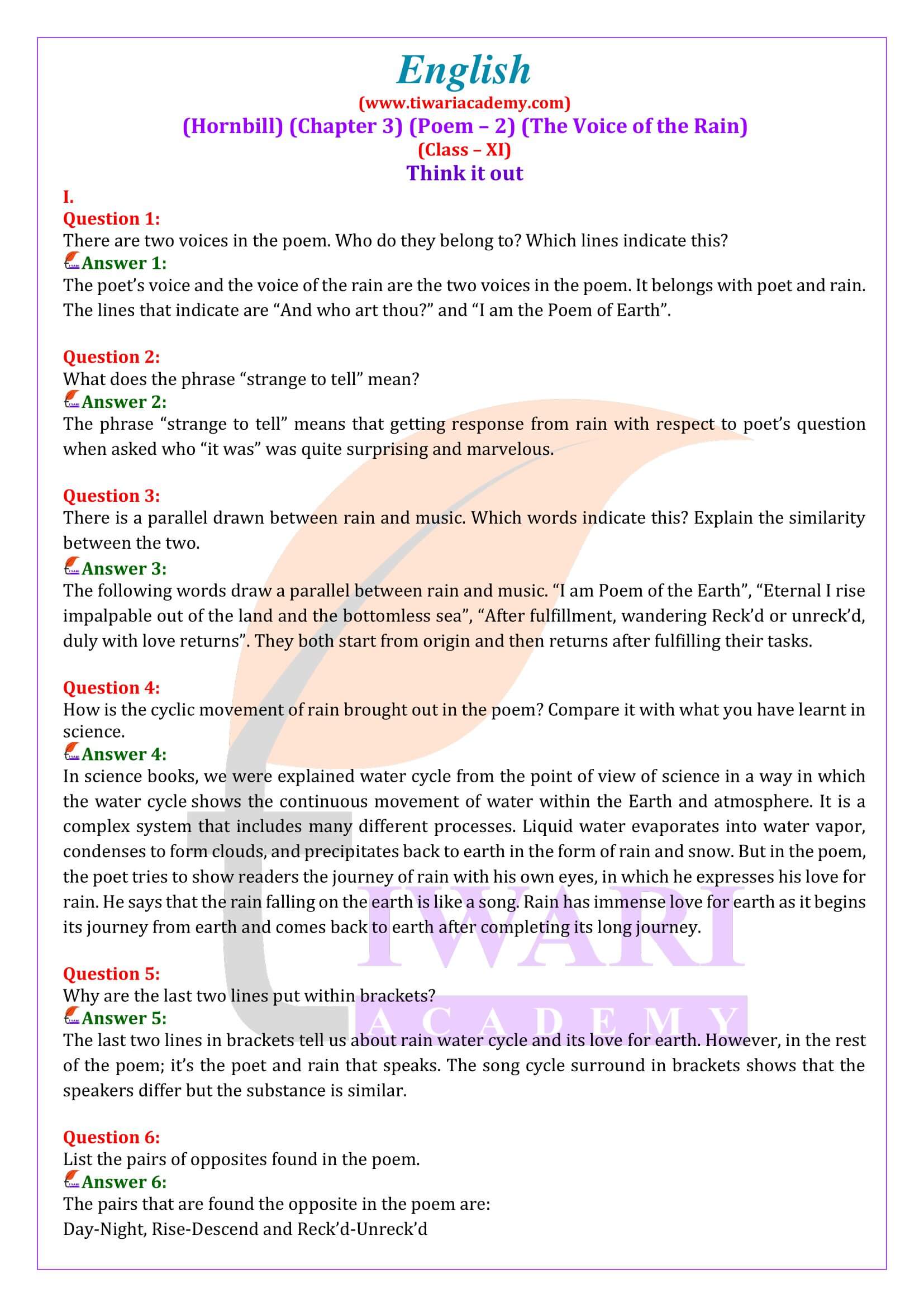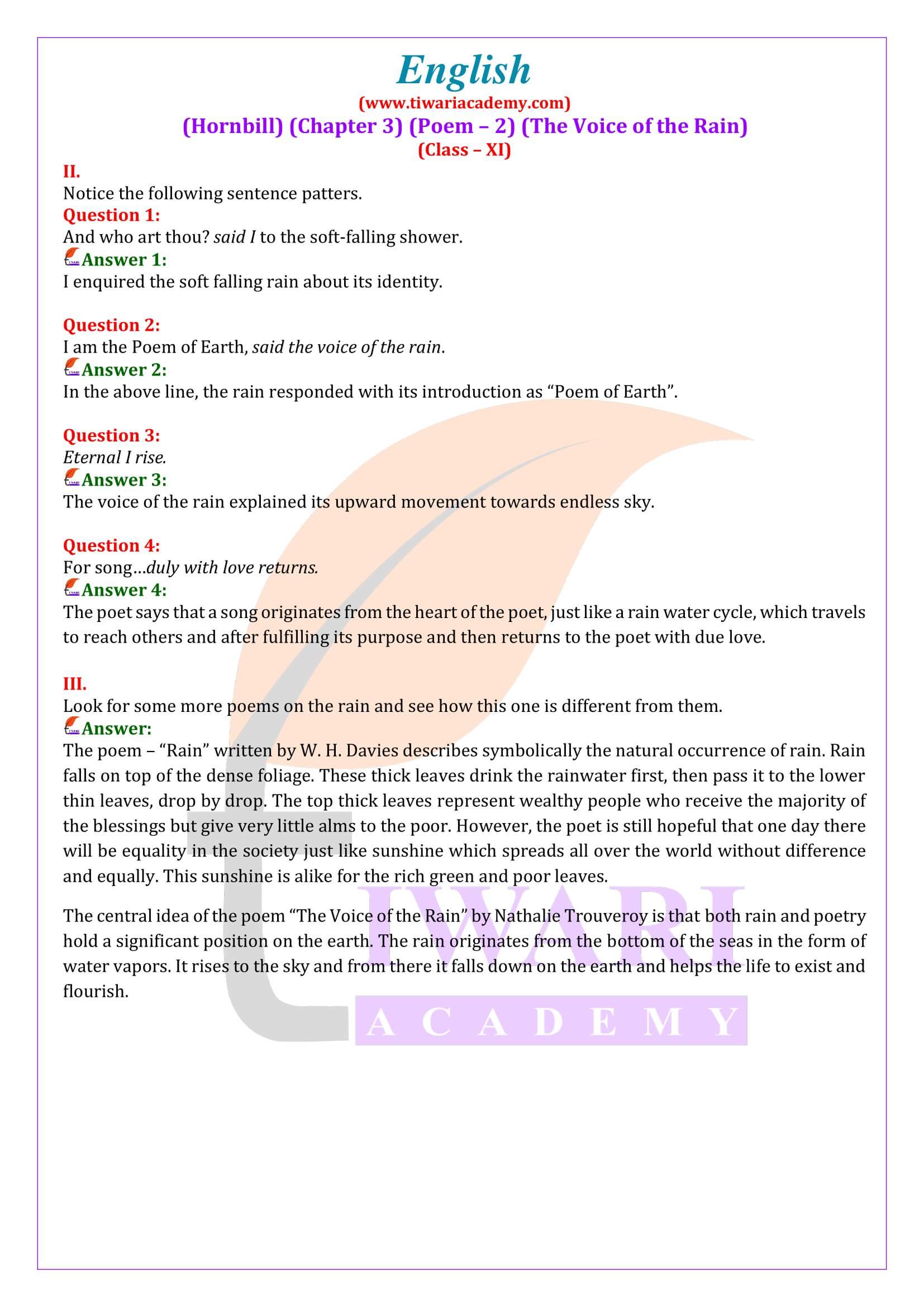NCERT Solutions for Class 11 English Hornbill Chapter 3 Discovering Tut the Saga Continues written by A.R. Williams and poem the Laburnum Top by Ted Hughes. Get extra question answer and practice questions updated for academic session 2024-25 class 11 English chapter 3 reading skills.
Class 11 English Chapter 3 Discovering Tut the Saga Continues Question Answers
- Class 11 English Hornbill Chapter 3 NCERT Solutions
- Class 11 English Hornbill Chapter 3 Peom 1 Answers
- Class 11 English Hornbill Chapter 3 Poem 2 Answers
- Class 11 English Hornbill Chapter 3 MCQ with Answers
- Class 11 English Hornbill Chapter 3 Extra Questions
- Class 11 English Hornbill Chapter 3 NCERT Book
- Class 11 English Hornbill all Chapters Solutions
- Class 11 all Subjects NCERT Solutions
King Tut’s body has been subjected to repeated scrutiny. Why?
King Tut always remained in the headlines because he was the mighty king of Egypt. Became king at a young age and died in mysterious circumstances within 8 years has stood as a mystery among people, scientists and researches around the world for centuries and his mummy has to come out of the grave many times to unravel this mystery.
Give reasons for the following:
Howard Carter’s investigation was resented.
On November 4, 1922, a team headed by British Egyptologist Howard Carter began excavating the tomb of Tutankhamun in the Valley of the Kings. Carter exposed Tut’s mummy to the desert sun in an effort to melt the resins. When that failed, he cut the corpse. Mummy got a lot of damage because of his efforts.
Carter had to chisel away the solidified resins to raise the king’s remains. Give Reason.
Carter exposed Tut’s mummy to the desert sun in 149 degree Fahrenheit in an effort to melt the resins. When that failed, he cut the corpse. Scientists around the world talk in two parts. Some say that Carter worked well in that era he did miraculously and go it in a very methodical way and some say that by cutting his corpse, he damaged the mummy.
Why was Tut’s body buried along with gilded treasures?
Tutankhamen’s mummy rested in the innermost coffin, which is made of solid gold. His body was wrapped in linen and over his face was placed an exquisite gold mask. Wonderful artifacts in gold were placed there. King Tut was also buried with everyday things such as board games, a bronze razor, linen garments and boxes of food and wine. The walls of the chamber in which King Tut was laid to rest were covered in gold; his coffin is a three-piece sarcophagus (a stone coffin), the innermost being 110 kilograms of solid gold.
The boy king changed his name from Tutankhaten to Tutankhamun. Why?
King Tut or Tutankhamen became king at a very young age. Before his arrival, the king Amenhotep IV had closed the temples and destroyed the idols which had haunted all the countrymen. King Tut’s real name was Tutankhaten and he wanted to do something different from all the previous kings. He had decided to change his father’s centuries-old tradition to a new name Tutankhamun which meant “living image of Amun”.
List the deeds that led Ray Johnson to describe Akhenaten as “wacky”.
Akhenaten means the servant of the Aten i.e. the sun disc. He moved the religious capital from the old city of the Thebes to the new city of Akhetaten, known now as Amarna. He smashed the images of Amun, a major God and closed his temples. All these deeds led Ray Jonson to describe Akhenaten as ‘Wacky’.
What were the results of the CT scan?
A CT machine scanned the mummy head to toe, creating 1,700 digital X-ray images in cross section. Tut’s head, scanned in 0.62 millimeter slices to register its complex structures to get supernatural information. The cut scan which was done to unravel the mysteries of Tut’s death did not yield any success and scan was absolutely normal of entire body.
List the advances in technology that have improved forensic analysis.
The word forensic has its origin from the Latin word forensis which stands for a forum. Forensic science as a part of the modern-day criminal justice system is still in its formative years. Interestingly, the importance of forensic science dates back to some of the ancient civilizations. Technology is quickly taking over every aspect of our lives, including solving crimes. During the forensic science process, measurements include analysis of evidence, fingerprinting or DNA identification, analyzing drugs or chemicals, and dealing with body fluids. This is just the beginning; science is changing very fast and in the coming years we will get to see amazing facts from doctors and scientists from all parts of the world.
Explain the statement, “King Tut is one of the first mummies to be scanned — in death, as in life…”
CT Scan is the gift of science, which has now reached almost every country of the world and is proving to be very effective in the treatment of patients. This is the best tool to know deep reasons of many diseases. Talking about King Tut, there is no doubt that she was the first mummy to be scanned. The reason for this was that he became king at a young age and then he died at a young age and the question of the cause of death was left in the minds of the people forever. To uncover this mystery buried in the ground for thousands of years, some of the world’s greatest scientists decided to scan King Tut and this was the first mummy in the world to be scanned.
Scientific intervention is necessary to unearth buried mysteries. Discuss.
Scientific methods should be used to unravel all those mysteries that have been buried for thousands of years. It also alerts us to the future and also provides information to historians and those who are interested in it. Excavation is the surgical aspect of archaeology: it is surgery of the buried landscape and is carried out with all the skilled craftsmanship. If you look at history, you can find that excavations were done from time to time from Asia to Africa and from America to Europe, as a result of which some surprising things are known. For example, excavation done in past one decade at the Purana Qila in Delhi has revealed remains of a pre-Mauryan era settlement from the 6th-4th century BCE.
